Top Galar Threats: New Pokémon to Watch out For in VGC20

With a new generation come brand new Pokémon and brand new strategies! For players wishing to jump straight into competitive, however, learning how these additions to the meta function may initially feel a bit overwhelming. What is it that makes Dragapult so strong? What’s the best way to use Duraludon? And what’s so special about Dracovish, anyway? Read on to learn more about the top used new Pokémon in Sword and Shield!
Note: the listed usage stats are from Pokémon Showdown’s 1630-weighted stats for December ’19, rounded to the nearest whole number.
Dragapult (Usage: 32%)
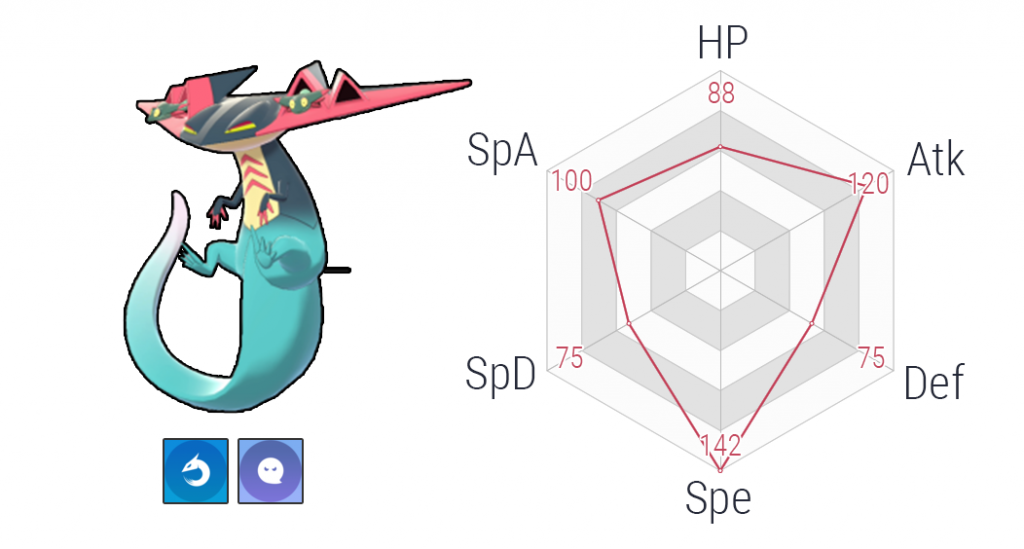
With its tough-to-resist Dragon/Ghost STABs, Clear Body to render it immune to stat drops, a blisteringly fast base 142 Speed, and solid 120/100 offenses, it should come as little surprise that Dragapult quickly established itself as a top threat in the VGC20 metagame. While these traits look scary at a glance, Dragapult is not without its weaknesses. Its bulk is mediocre at best, making it a bit of a glass cannon. Further, its physical STAB options leave something to be desired—Phantom Force taking two turns to execute is not always ideal, and Dragon Claw or Dragon Darts have rather low base power.
As some of Dragapult’s staple moves come with drawbacks, offensive Dragapult variants make for fantastic Dynamax candidates. The Max Move effects are easy to make good use of: Max Phantasm reducing the opposing field’s Defense is incredibly threatening, and Max Wyrmwind can help increase your side’s longevity. The HP boost ensures Dragapult can actually take a hit, too!
Dragapult’s impressive movepool and sheer unpredictability both ensure it will always be a scary Pokémon for players to face. Will it use a physical set, perhaps utilizing Dragon Dance and redirection support from a Pokémon like Togekiss? Will it have U-turn to pivot about, Steel Wing to threaten Fairies, or Fly to raise its Speed with Max Airstream? Will it use a special set, with a wide array of coverage move options such as Flamethrower, Thunderbolt, or even Hydro Pump? Or will it, perhaps, make use of Dragapult’s support options, which include moves such as Light Screen, Reflect, Ally Switch, Thunder Wave, and Will-O-Wisp? It’s tough to say, and guessing wrong may just cost you a game.
As far as item choices go, Life Orb is a no-brainer on offensive sets, whereas Focus Sash sees play primarily on the Screens set. More niche picks include Choice Specs and Lum Berry. Recently, there’s been a noticeable spike in Weakness Policy usage on Dragapult. It may lack the bulk of other common Weakness Policy users, but Dynamax mitigates this problem somewhat.
It is worth noting that Max Steelspike is becoming increasingly more common on Dragapult; the Defense boost is appreciated, but more importantly, it hits Grimmsnarl and Tyranitar hard. Now, even the Pokémon intended to counter Dragapult may find themselves threatened by it. This flexibility is part of what let Dragapult cement its place as the top Pokémon in the early VGC20 metagame.
Duraludon (Usage: 21%)
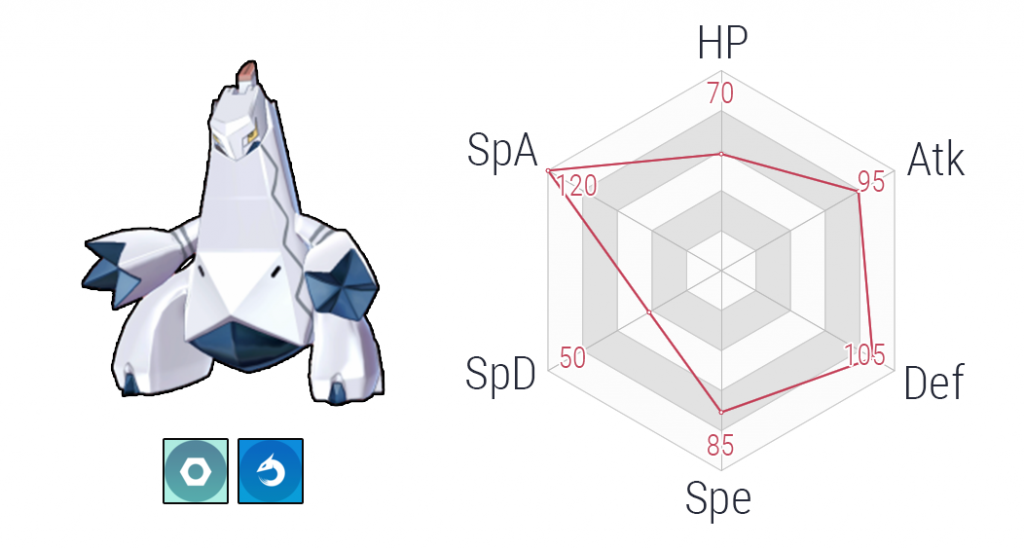
Despite looking like it should be a slow, physically-oriented Pokémon, this Steel/Dragon type sports a decent base 85 Speed and is, in fact, specially oriented, with a base Special Attack of 120. Duraludon’s most glaring weakness is its meagre Special Defense stat, which has a mere 50 base. For that reason, many players opt to patch this flaw by equipping it with an Assault Vest. Others still go for the ever-popular Life Orb or Weakness Policy.
Much as with Dragapult, Duraludon’s excellent typing is one of its greatest strengths—but so is its Ability, Stalwart, which allows it to ignore redirection and Ally Switch. Togekiss’ rise in usage has made Follow Me-based set up strategies increasingly common, which makes Duraludon one of the few reliable answers to lead combinations such as Togekiss + Dragapult. Some players even opt to use Dragon Tail Duraludon to get around common Trick Room leads, such as Indeedee-F + Dusclops.
It should come as little surprise that Duraludon, too, is a commonly Dynamaxed Pokémon. Perhaps partly due to the lack of Electric-type Pokémon other than Rotom in the metagame, Thunderbolt has quickly become a staple coverage move for it. The last moveslot is often a choice between Body Press, Dark Pulse, or Solar Beam: Body Press works especially well in conjunction with Max Steelspike and allows Duraludon to threaten Pokémon such as Excadrill and Tyranitar, Max Darkness lets Duraludon drop the opposing side’s Special Defenses to deal more damage, and Max Overgrowth gives Duraludon a way of getting around Solar Beam’s charging requirement in order to dispatch opposing Gastrodon.
Grimmsnarl (Usage: 20%)
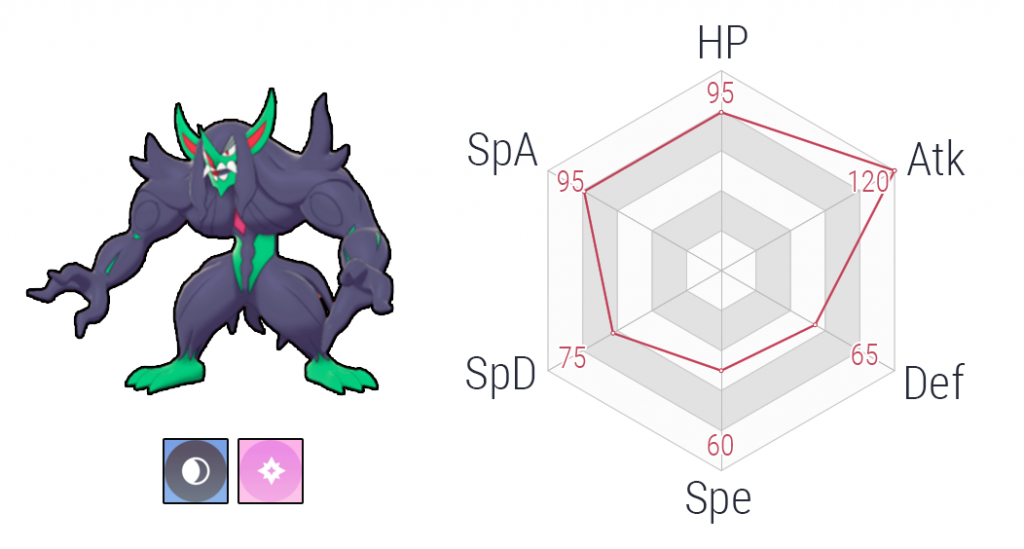
Grimmsnarl is the first ever Pokémon to have the Dark/Fairy typing, which gives it an undeniably useful set of STABs. Outside of a good base 120 Atk, Grimmsnarl’s stats are mediocre at best, however, and its base 60 Speed does it few favors. Thankfully, it gains access to Prankster, which allows it to easily bypass its poor Speed.
Grimmsnarl has access to a wide variety of useful support moves to help it make good use of Prankster, the most notable of which is Thunder Wave. With the new Speed mechanics, Grimmsnarl can use its Prankster Thunder Wave to force a Pokémon to move later on the same turn. Also commonly seen on Grimmsnarl are Reflect and Light Screen, often paired with Light Clay as the item of choice. Some players use Swagger alongside a Lum Berry Pokémon or an Own Tempo Mudsdale to quickly raise their partner’s Attack stats. Another strategy involves making use of the sneaky Trick + Eject Button combo, which can force opponents to waste their Dynamax. Other noteworthy support moves affected by Prankster include Taunt and Fake Tears.
As far as offensive options go, Grimmsnarl has access to STAB Sucker Punch, Foul Play, Play Rough, and a new signature Fairy-type move in Spirit Break, which lowers the target’s Special Attack stat in addition to doing damage. With the prominence of the Light Clay set (which generally runs Screens, TWave, and one coverage move such as Foul Play), many players often forget that Grimmsnarl also gets access to Fake Out. While Dynamaxed Pokémon can’t be Faked Out, the rise in Pokémon such as Protectless support Togekiss nevertheless makes Fake Out more valuable than some might have initially assumed.
Dracovish (Usage: 16%)
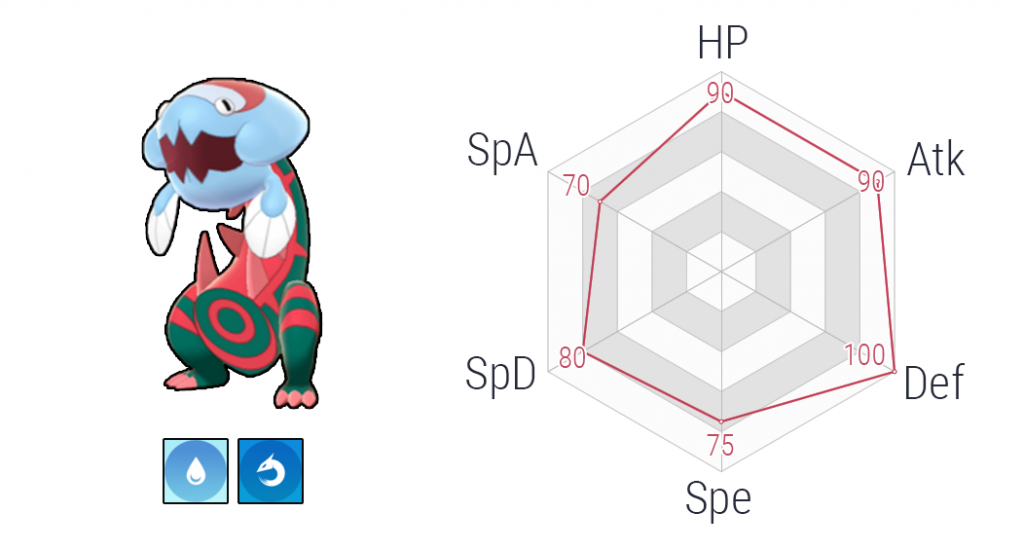
Although there are 4 different fossil Pokémon in Galar, Dracovish has enjoyed much more attention than the other three. This may be partly thanks to its Water/Dragon typing and due to having better Speed and Attack than the Arcto family of fossils. Speed in particular is a key stat for Dracovish due to its quasi-signature move, Fishious Rend.
Fishious Rend is a physical Water-type move with a base power of 85 which doubles in power if the user moves before its target, making Dracovish devastating to face when paired with proper Speed control. This is also one of the main reasons why Choice Scarf is a particularly popular choice of item for Dracovish, though some simply choose to boost its damage output even further with items like Choice Band. The Choice lock is rarely an issue for Dracovish, as the sheer power of Fishious Rend means its coverage moves are less important.
In addition to the above, Dracovish gets Strong Jaw as an Ability to boost Fishious Rend’s damage to new heights; this, however, makes Dracovish rather inflexible, as Dynamaxing would cause it to lose the damage boost from its Ability. For that reason, you will rarely see a Dynamaxed Dracovish.
While a rather predictable Pokémon, Dracovish is nevertheless scary for many teams to face—Fishious Rend hits incredibly hard when its base power is doubled, and as such, players have to either ensure they move before Dracovish or simply negate its damage entirely with the help of tools such as Gastrodon’s Storm Drain. Don’t make the mistake of assuming your Pokémon can take a Fishious Rend simply because it’s a resisted hit! Fishious Rend from a Banded Dracovish can easily one-shot more frail Pokémon—such as Dragapult—if Dracovish happens to move before them.
Corviknight (Usage: 14%)
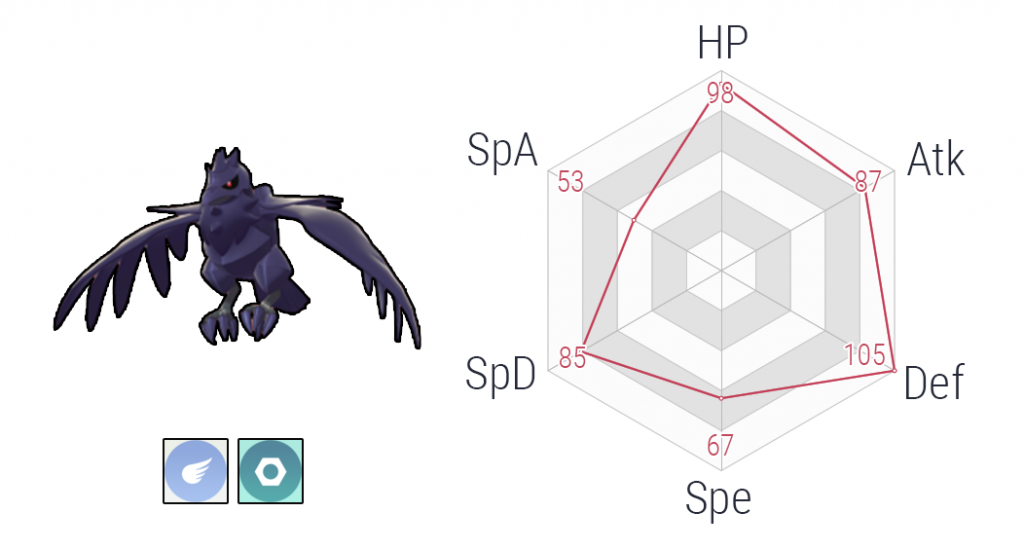
With its mediocre base 87 Attack and a less than stellar base Speed stat of 67, Corviknight is far from an offensive threat. Its strengths, instead, lie elsewhere. Corviknight’s Steel/Flying typing grants it a myriad of useful resistances and only two weaknesses: Fire and Electric. Both of these are easily covered by a Ground type, making Gastrodon a common partner to Corviknight. When paired with respectable 98/105/85 bulk, the lack of weaknesses makes Corviknight tough to take down for teams which lack hard-hitting Fire or Electric-types, such as the Rotom forms.
Corviknight’s unique Ability, Mirror Armor, also proves very useful. Not only does it make Corviknight immune to stat drops, but it also reflects them back to the opponent, which means players need to be very careful about using stat-lowering Max Moves or bringing in their Intimidate Pokémon on Corviknight. Partly for this reason, some players choose to use specially based support Arcanine to more reliably handle this part-Steel bird, as physical Arcanine have their Intimidates reflected back at them and struggle to deal damage as a result.
As far as sets go, Corviknight is surprisingly versatile. Iron Head, Brave Bird, and Roost are staples, but it also has access to the Iron Defense + Body Press combo for players who desperately need the Fighting coverage (which usually requires dropping Brave Bird), as well as a more conventional set-up move in Bulk Up. Some simply opt for general utility with Tailwind or Taunt. While players often used HP-restoring items such as FIWAM Berries, Sitrus, or Leftovers on Corviknight earlier in the metagame, Maranga Berry and Lum Berry have become more common recently. More unusual item choices include Weakness Policy or Psychic Seed.
Despite not hitting quite as hard as many other common Dynamax options, Corviknight makes for a good Dynamax candidate thanks to Max Steelspike and Max Airstream. The Defense and Speed boosts granted by these moves greatly benefit not only Corviknight, but also its partner, making it more of a supportive Dynamax option.
Indeedee-F (Usage: 13%)
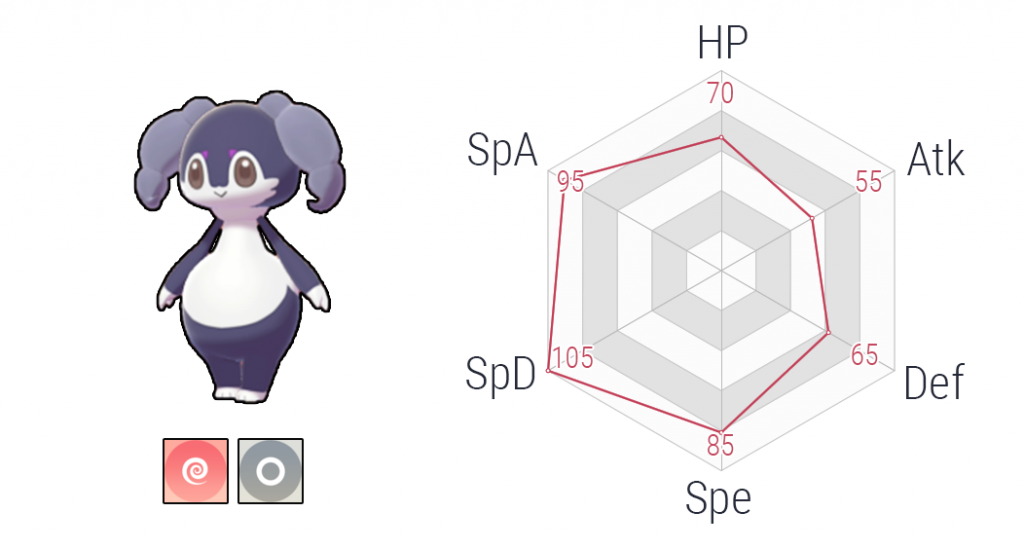
Female Indeedee looks unremarkable at a glance: a Psychic/Normal type with mediocre stats doesn’t seem like much to write home about. However, it is the first Pokémon to have both Psychic Surge and Follow Me, meaning it provides redirection support while blocking Fake Out. Due to the removal of Sky Drop, these properties mean there are very few ways to get around Indeedee-F’s Follow Me. Items such as Focus Sash, health recovery Berries, or type resist Berries can be used to ensure Indeedee-F requires double-targeting to go down.
Indeedee-F is most commonly seen as a partner to Trick Room setters. The immunity to Ghost means it has an easier time tanking Dragapult’s attacks, which is key, as many TR setters are weak to Ghost. That said, it can facilitate other set-up as well, or help activate Psychic Seed on Pokémon such as Hawlucha (which needs it for its Unburden boost).
Female Indeedee is a bit of a one-trick pony, but it doesn’t need to do more than click Follow Me in the vast majority of cases. Should it need to, it can also use terrain-boosted Psychics to deal some decent damage or Mystical Fire to check Steel-types. It’s also worth noting that Indeedee-F has a very wide variety of support options at its disposal, including Heal Pulse, Healing Wish, Helping Hand, Ally Switch, Safeguard, screens, or even Trick.
Hatterene (Usage: 8%)
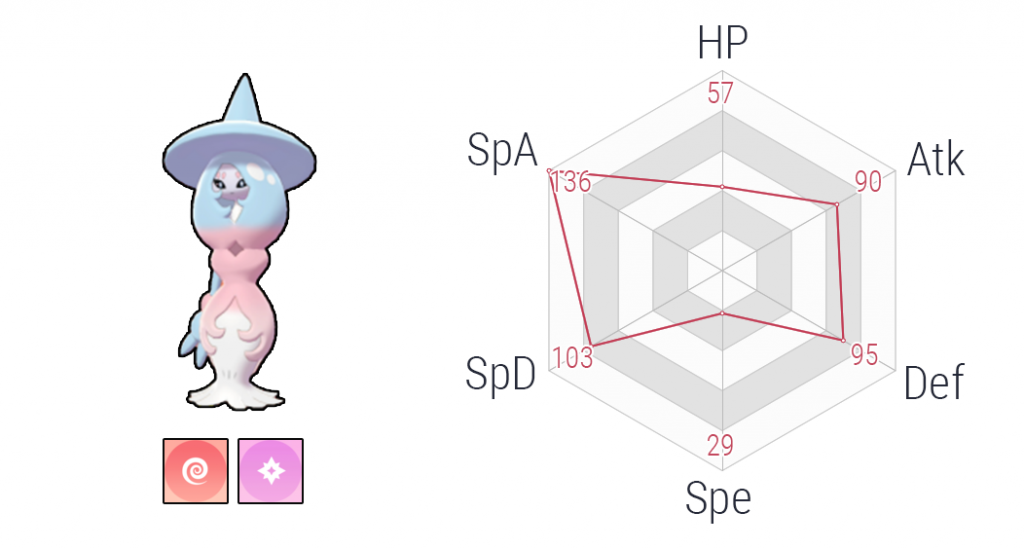
Hatterene shares its Psychic/Fairy typing with Pokémon which have previously seen use in VGC, such as Gardevoir and Tapu Lele. Much like them, it has a high base Special Attack stat (of 136), but rather unlike them, it has a very slow base Speed of 29. Coupled with Hatterene’s Ability, Magic Bounce, this makes it an excellent choice for setting Trick Room, as it is immune to moves such as Taunt and Roar.
Indeedee-F is a natural partner for Hatterene, setting Psychic Terrain to boost its damage and providing it with redirection support to ensure Trick Room goes up. Babiri Berry can be used on Hatterene to ensure it’s able to get its TR up even against Duraludon; otherwise, Life Orb is a good choice.
Once TR is up, Hatterene is free to Dynamax and start throwing out terrain-boosted Max Mindstorms. Max Starfall is another offensive option, but it has the drawback of overwriting Psychic Terrain with Misty Terrain. One also shouldn’t forget Hatterene has access to Mystical Fire, which lets it threaten Steel types such as Ferrothorn.
While Indeedee-F + Hatterene was the premier Trick Room duo at the very beginning of the VGC20 meta, Dusclops now seems to have overtaken its spot, largely due to having better bulk, more support options, and being able to easily activate Rhyperior’s Weakness Policy with Bulldoze. However, with some players using Dragon Tail Duraludon in order to get around Indeedee-F + Dusclops, we may see TR teams make a return to Indeedee-F + Babiri Berry Hatterene.
Galarian Darmanitan (Usage: 6%)
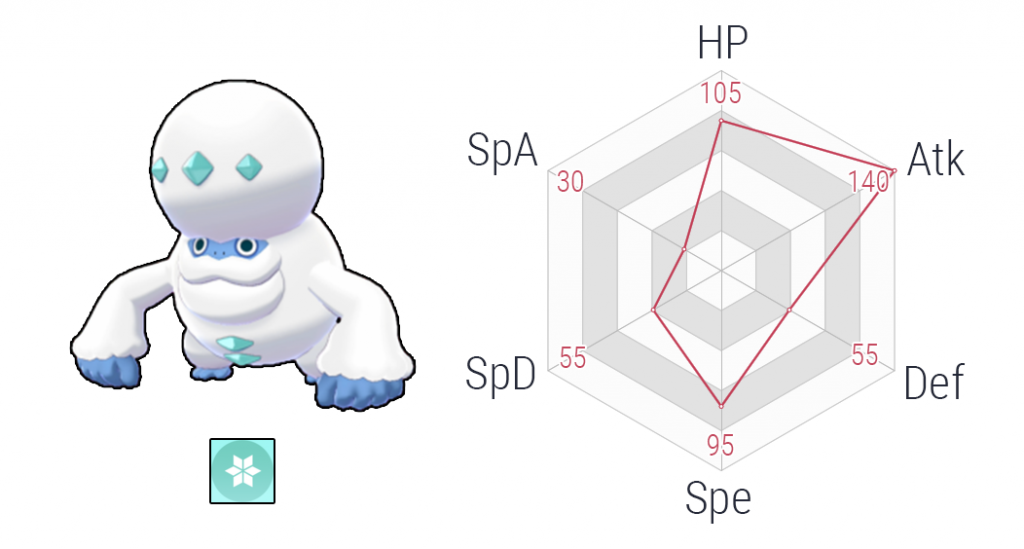
A glass cannon in every sense of the word, Galarian Darmanitan is an Ice type with a massive base 140 Attack, a good base 95 Speed, and poor 105/55/55 bulk to balance it out. Unlike most competitive Pokémon, Darmanitan has two usable Abilities: Gorilla Tactics, which functions exactly like a free Choice Band (without taking up an item slot), and the rarer Zen Mode, which turns Darmanitan into a Ice/Fire type with an absurd base 160 Attack and 135 Speed once it reaches half health.
Of the two variants, Gorilla Tactics Darmanitan is more easy to slap onto a team and therefore much more common. Since it’s already Choice-locked due to its Ability, it often carries a Choice Scarf for what is essentially a free Speed boost or a Choice Band to hit even harder than it already does. Icicle Crash, Flare Blitz, Superpower, Rock Slide, and U-turn are some of Darmanitan’s staple moves. The Ice/Fire/Fighting coverage is highly unusual and quite tough to cover for. Since the boost from its Ability is lost upon Dynamaxing, Gorilla Tactics Darmanitan are unlikely to Dynamax.
Zen Mode Darmanitan, on the other hand, plays rather differently: it has to take damage in order to change forms. A Belly Drum set is one way for it to do this, though it requires a partner that supports its set up; another option is simply Dynamaxing and hoping your opponent will damage you enough to put you in Zen Mode, which is not unlikely given Darmanitan’s poor bulk. Zen Mode Darmanitan’s item options are more flexible, though Life Orb and Weakness Policy are not uncommon for non-Drum sets.
Dracozolt (Usage: 2%)
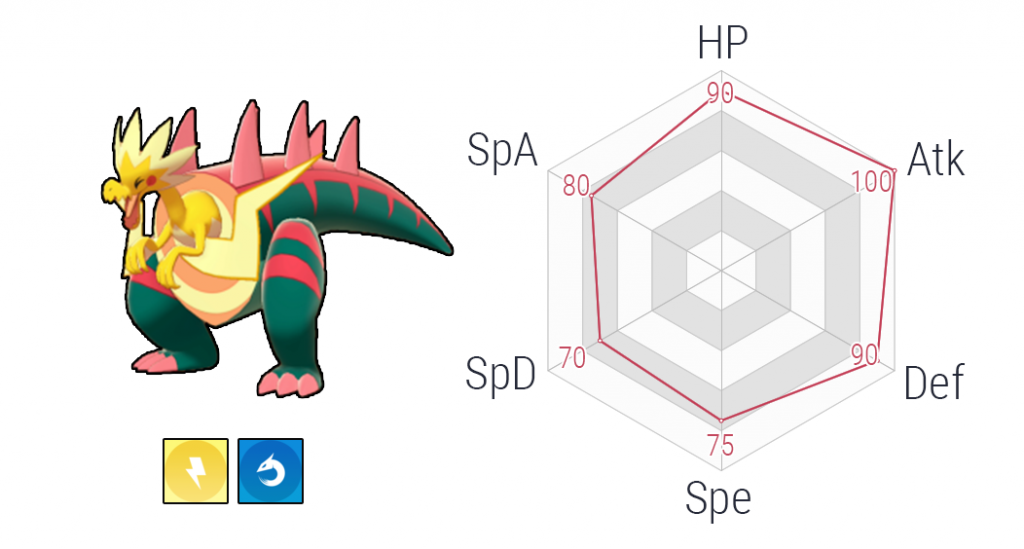
Many players initially favored Dracovish over Dracozolt, but Sejun’s victory with Dracozolt in Victory Road’s recent World Champion Invitational has brought attention to Dracovish’s previously-forgotten Electric/Dragon fossil sibling. Much like Dracovish’s Fishious Rend, Dracozolt has a similar move in Bolt Beak, which is a physical Electric-type move with a base power of 85. Just like Fishious Rend, it doubles in power if the user moves before its target.
A key difference between Dracovish and Dracozolt lies in their Abilities: whereas Dracovish can reliably boost its damage with Strong Jaw, Dracozolt instead relies on Hustle. Hustle is a double-edged sword: it has no drawbacks when on a Dynamaxed Pokémon, as Max Moves can not miss, essentially giving its user a free boost to its attacks. Once Dynamax ends, however, Dracozolt will have to contend with having a lower accuracy on its moves than usual.
The ability to make proper use of Dynamax makes Dracozolt considerably less predictable than Dracovish, which would rather simply click Fishious Rend. This flexibility means Dracozolt is much more likely to utilize item options other than Choice Scarf or Band, such as Life Orb or Assault Vest. It’s also more likely to make use of its coverage options, which include moves like Dragon Claw or Stomping Tantrum—both of which help increase Dracozolt’s longevity when used as their Max Move equivalents.




